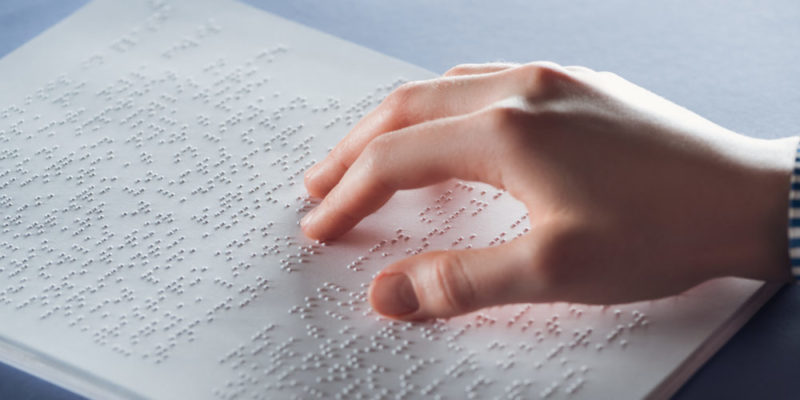We explain what reading is, how it is classified and what its elements are. In addition, its general characteristics, code and speed.
What is Reading?
Reading is a technique of understanding and decoding pre-established signs in a language and stored in a medium, either through written words, images or other types of representations.Reading and writing form two sides of the same coin , fundamental in the cultural and intellectual development of humanity, since they constitute the possibility of recording reality and recovering it in another place and time and even by a different person .
It is a complex human process, which is commonly carried out through sight , although there are special forms of reading (such as the braille method) that do not depend on this specific sense. Numerous benefits are attributed to it in individual human development, since it is the fundamental tool for transmitting knowledge and, therefore, for learning and communication .
Origin of reading
The origin of reading is uncertain in the history of humanity, but logically it would go hand in hand with the invention of writing , since one cannot exist without the other.
In any case, these are technologies created by man , based on their natural and intrinsic capacity to generate language .
The first attempts at writing were in the form of hieroglyphics, around 5,000 years before Christ , long before the creation of the first phonetic alphabets (which represent the sounds of the language) around 3,500 years before Christ .
-
Types of reading
 Two types of reading are recognized:
Two types of reading are recognized:
- Aloud. It is the oldest and consists of reading aloud , pronouncing each word read from the text .
- Silent. It does not require the intervention of any part of the body other than the eyes, and it occurs silently.
Reading elements

Every reading requires a text: a body of interpretable signs that contain the message to be interpreted.
Said text can consist of numerous forms of signs or symbols, images or icons (such as hieroglyphs) more or less abstract, either trying to represent their referent visually (such as ideograms) or representing sounds through a more complex process of abstraction. (like the letters of the alphabet).
-
Code
Reading a text in another language , especially a very distant one, makes this clear: the difference between a text and a doodle often depends on the education of the reader .
Directionality

Since written texts have a beginning and an end , they must be read in that correct order to fully understand them.
This order works in a specific spatial direction , for example: Westerners read from left to right, while in other latitudes they read from right to left or from top to bottom.
-
Sequentiality
The correct interpretation of the message will then depend on the specific sequence of words: words cannot be skipped , nor can one return to those left behind.
Reading, like time , runs in one direction.
Reading speed

The reading speed of a text depends on many factors, including the ability of the reader . However, reading faster is not always reading better or reading more.
It is usually considered that the average speed of a reading will depend on the purposes for which it is done, for example:
- To memorize what you read. It tends to be read more slowly: less than 100 words per minute.
- Learning. A more standard reading, such as informational reading on any subject, runs between 100 and 200 words per minute.
- Leisure or relaxed. A more relaxed recreational reading can range between 200 and 400 words per minute.
- Speed reading. There are particularly fast reading techniques, which allow reaching 700 words per minute.
-
Literacy
 Reading is an integral part of the human educational apparatus. It is estimated according to Unesc (2010) that a percentage close to 85% of the world's adult population is literate (knows how to read and write), especially in industrialized and developing countries .
Reading is an integral part of the human educational apparatus. It is estimated according to Unesc (2010) that a percentage close to 85% of the world's adult population is literate (knows how to read and write), especially in industrialized and developing countries .This is not the reality of many African and Asia Minor countries where the margins of poverty impede or hinder education and dramatically reduce the literacy rate.
Reading comprehension
The ability to interpret and retain meaning, as well as the ability to reach deeper and less obvious layers of meaning, is called reading comprehension or reading competence .
This ability grows with practice and allows for more complex and developed ways of thinking .
-
Special types of reading
 There are other forms of reading, which do not involve words or verbal language. Among them we can mention:
There are other forms of reading, which do not involve words or verbal language. Among them we can mention:
- Music reading. Musical notation uses its own language to record the specific sounds that must be made, in order and sequence, with one or several musical instruments to reproduce a specific melody.
- Scientific reading. mathematical, physical or chemical formulas and equations reproduce their processes (mathematical operations, physical formulas or chemical reactions) through a specialized and technical language that can also be read to understand the description of a physical or imaginary reality.
- Braille reading . Although it is actually a replacement method for ordinary verbal writing, designed for the blind, it is a special form of reading that uses touch instead of sight.
The above content published at Collaborative Research Group is for informational and educational purposes only and has been developed by referring reliable sources and recommendations from technology experts. We do not have any contact with official entities nor do we intend to replace the information that they emit.
Abubakr Conner brings a diverse skill set to our team, and covers everything from analysis to the culture of food and drink. He Believes: "Education is the most powerful weapon that exists to change the world." .
Leave a reply
Your email address will not be published. Required fields are marked *Recent post

Sport: What Is It, Types, Risks, Features, Characteristics and Examples

Dogs: Emergence, Features, Characteristics, Feeding and Breeds

Story: Definition, Elements, Structure, Features and Characteristics

